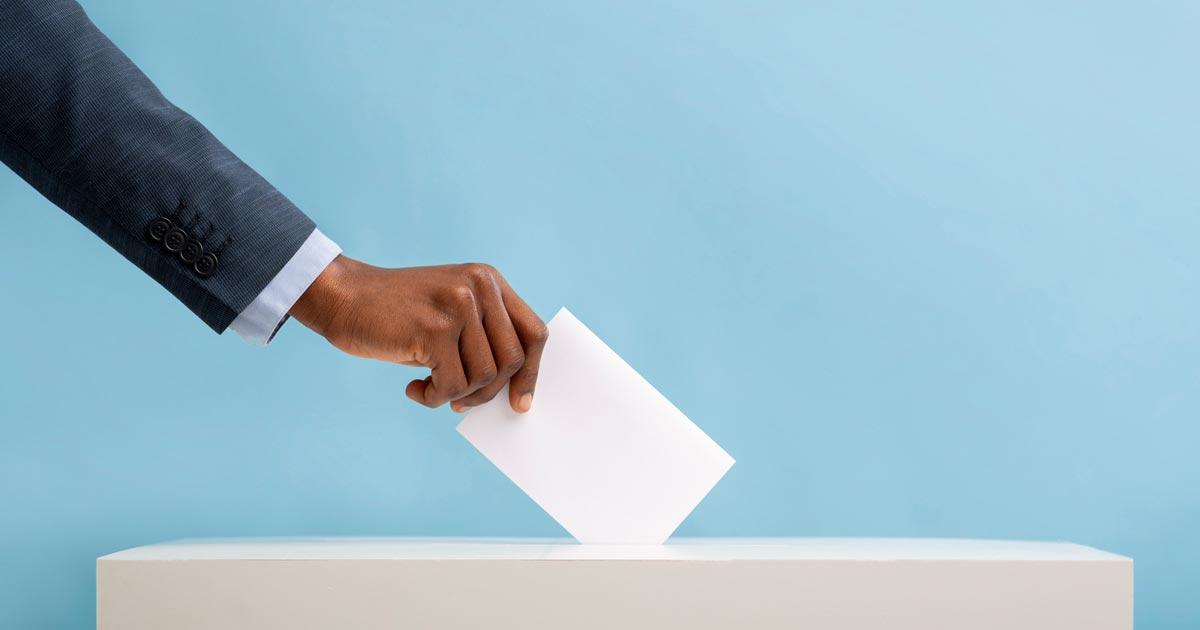
Attempting to understand the political polarization and dysfunction that has increasingly come to define American politics in the twenty-first century requires grappling with a host of interconnected phenomena. The gradual transformations undergone by the Republican and Democratic parties, which saw the steady elimination of liberal Republicans and conservative Democrats, have deep historical roots. For all its apparent complexity, however, our political dysfunction largely stems from a small set of easy-to-understand problems. We must, therefore, resist the popular urge to attribute polarization to specific figures, such as Trump or Obama, and instead look at the structural reasons these figures emerged when they did and into what environment.
History, as Scott Horton says, didn’t start this morning.
Single-Winner, First-Past-the-Post Districts
The problem is, in part, an inherited one. For all their ingenuity and creativity in crafting an experimental new kind of government, the Founders directly adopted the British system of elections at the district level. This was understandable, there being few if any applicable historical or contemporary examples they could look to for guidance, and this feature of the British electoral model apparently worked fine. And in a parliamentary system, where the effective head of government is the de facto leader of a majority coalition in parliament, the model can and does work fine.
In presidential systems not so much.
This has always been a bug more than a feature. And as the American political scientist Lee Drutman has documented, it is telling that while many governments around the world have amended their electoral rules, switching from single-winner, first-past-the-post districts to split-member proportional districts, none have made the switch from the latter to the former.
Uncompetitive Districts
Due to a combination of geographical sorting and gerrymandering, 94 percent of Congressional districts in the United States are now what political scientists designate as uncompetitive. This means one party enjoys so much local popular support it de facto controls that congressional seat. In these districts, the greatest threat therefore comes from a candidate’s own party—typically from farther right or left depending on whether the district is Republican or Democrat controlled. This effectively means the winner of that party’s primary becomes the de facto congressional representative for the district.
As political participation fell across the board from the 1970s through the 2000s, primary voter turnout fell with it. Today, just 28 percent of registered voters nationwide turn out on primary day—up from 14 percent a decade ago. Those who turn up are generally the most ideologically committed partisans of their parties and they effectively choose upwards of 90 percent of Congress’s members.
Unsurprisingly, under these conditions it was increasingly the most partisan of their parties each sent to Congress.
The Nationalization of Elections
This was essentially the ideological purification of brands. As the geographical sorting and ideological party realignments of the 1960s–90s documented by Alan Abramowitz unfolded, party leaders increasingly sought to distinguish their party by emphasizing its ideological commitments. The strategy, pioneered by Newt Gingrich, sought to replace discussions of local issues with the major issues separating the two national parties as the dividing lines in local races.
Because the two parties were increasingly distinct both ideologically and demographically, along urban/rural, college educated / blue collar, secular/Christian, nonwhite/white, political fights at the national level came increasingly to be about the character of the country itself. Under such circumstances, the stakes involved are perceived to dramatically increase. For, unlike distributional questions, questions of national identity cut to who we are and what are values are. Combined with a uniquely competitive electoral environment, politics has increasingly come to resemble warfare rather than reasoned debate.
Insecure Majorities
About that newly competitive electoral environment, as Frances Lee outlined in her important book insecure majorities were a relatively rare occurrence in American politics in the twentieth century. From the Civil War onward Republicans essentially dominated the White House and Congress until FDR’s landslide, which ushered in a period of Democratic dominance. From the end of the Second World War until 1994, Democrats controlled the House for forty-five of forty-nine years—with the Senate much of the time as well.
When one party enjoys such broad support, the dynamics of negotiations between parties are fundamentally different than when either party could find itself in power come next November. Where much of the twentieth century saw minority parties positively collaborating in the legislative process, using what power they had to pragmatically shape legislation more to their liking, American politics in the twenty-first century has been defined by strategic opposition—betting, in effect, that fiercely opposing your opponent’s legislative initiatives will prove more popular with your own voters than will making compromises to govern more effectively.
The Growth of Government
Democracy in America, in the Tocquevillian sense, evolved naturally out of deeply rooted social, economic, and political interrelations at the local level. But for much of its history “democracy,” in the modern parlance of one person one vote, was not practiced in the United States. Real universal suffrage arrived late, in the 1960s. It brought with it subsequent enlargements of a federal government already too big, and it was this expansion, perhaps more than anything else, that destroyed the foundations of democracy in America.
First, politics gradually ceased being local. The growing power and wealth concentrated in Washington led naturally to an alienation of the people from the power that they collectively supposed to be theirs. And the people’s collective faith in their government, by any number of metrics, steadily declined from the 1960s onward.
Second, the expansion of the government obviated the purpose of most of the prior institutions of civil society, the very foundations of democracy. Schools were placed under the purview of Washington, while the many mutual aid societies and church groups central to community life were outright replaced or marginalized. Citizens were torn from their collective institutions, placed at home, and told to write a letter to their representative or donate to one or the other party.
The truth is that over the course of the twentieth century, America gradually traded democracy for statism.
Conclusion
While there are other factors that bear consideration—and some, like the centralization of party leadership and the increasing influence of corporate lobbying over the legislative and electoral processes, bear significant shares of the blame—these five interconnected issues are most to blame for the dysfunction that has made America’s once enviable government a laughingstock the world over.
While the process was a gradual one, and therefore passed largely unobserved, today historians of American politics can clearly delineate the development of this trend towards less pragmatic politics: for in a political incentive structure where candidates feel most answerable to their own party’s most radical partisans, what incentive is there to compromise in order to govern more effectively?
Answer, unless you believe politicians are solely guided by pursuit of the public good, rather than with an eye toward their own chances at reelection, none.
In case you are in any doubt, as a GOP strategist succinctly explained: “If the purpose of the majority is to govern, then the purpose of the minority is to become the majority.”
Though it is obvious something must be done, because any change to the status quo would threaten the collective monopoly on power they have long enjoyed, Republicans and Democrats predictably oppose even mild attempts at reform, such as rank choice voting—let alone the more radical but desperately needed switch to multimember proportional districts.
We are therefore likely to see only more increasingly desperate efforts by both Democrats and Republicans to capture the state, producing more dysfunction—until, finally, the system fails completely.





